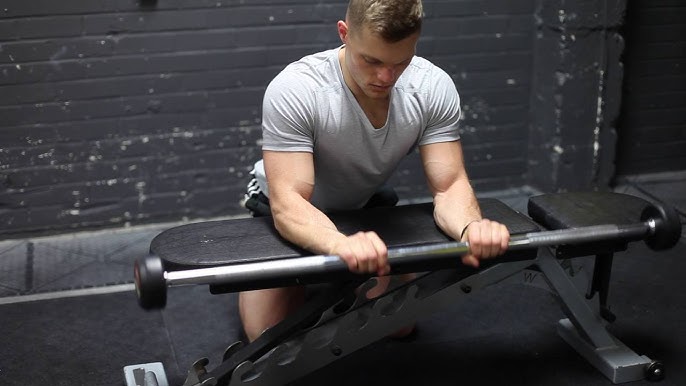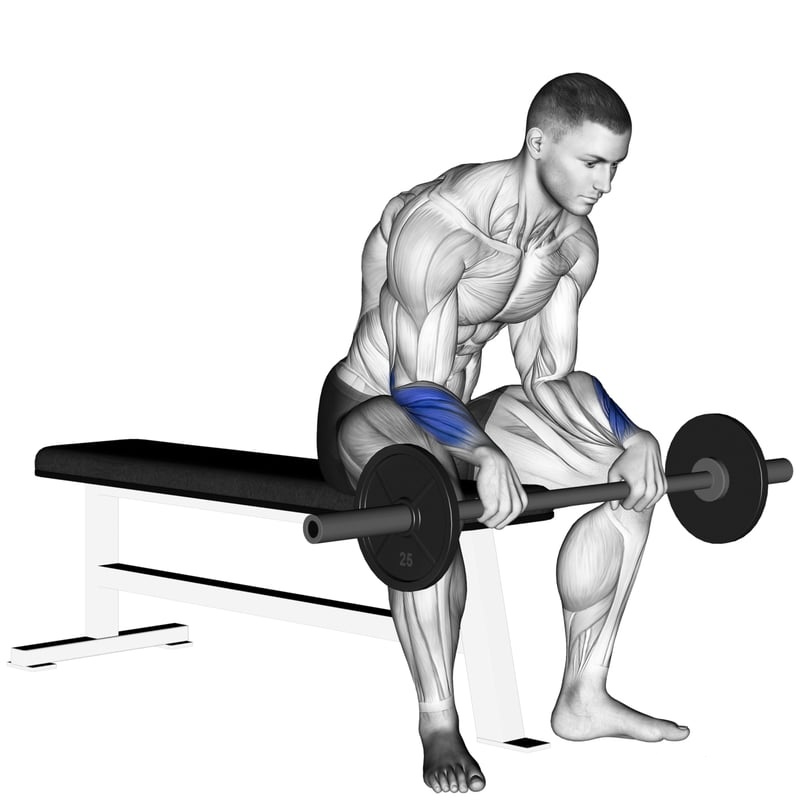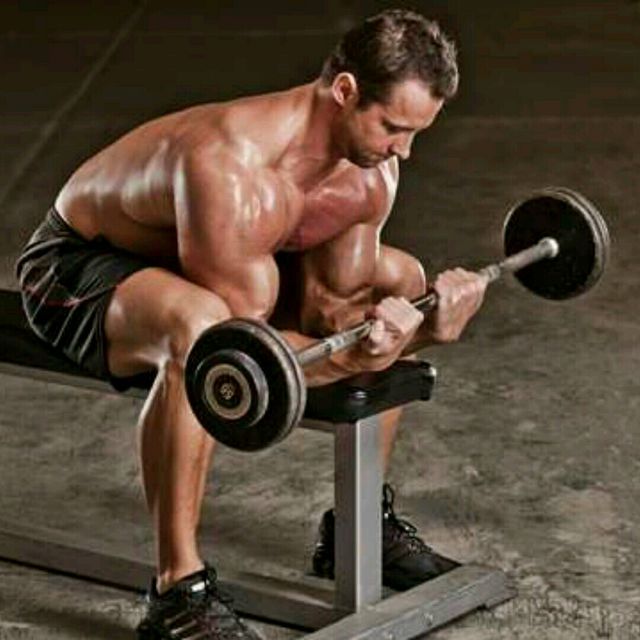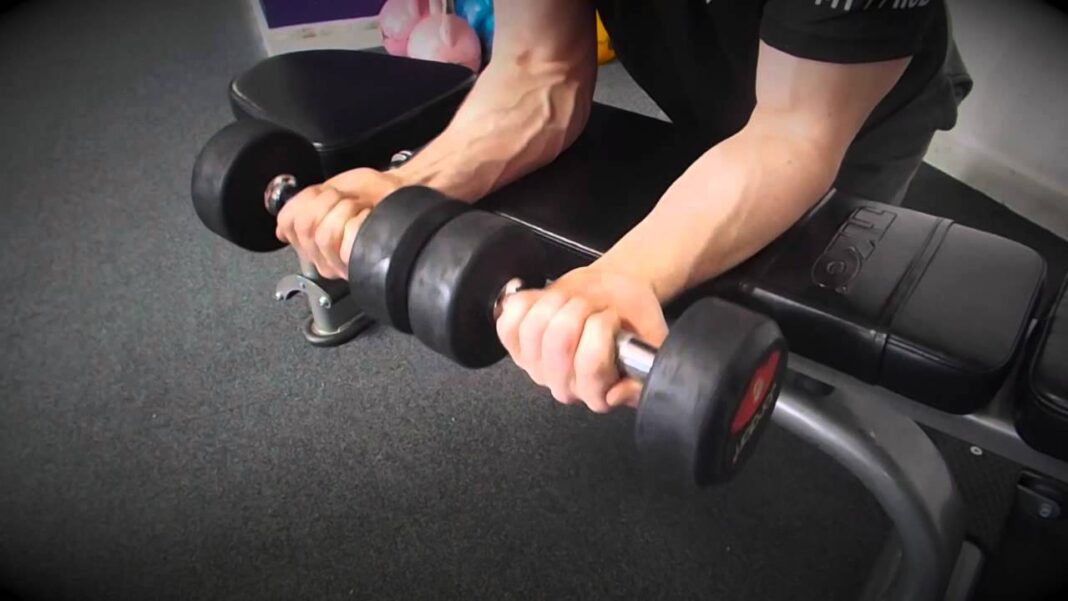Reverse Barbell Wrist Curl (Overhand Grip): Building Balanced, Powerful Forearms
When you think of impressive forearms, you probably picture thick, veiny flexors running down the inside of the arm. But if you stop there, you’re only doing half the work.
True forearm mastery—the kind that gives you balanced, three-dimensional muscle from every angle—comes from training both sides equally. Enter the Reverse Barbell Wrist Curl, the perfect counterpart to the standard wrist curl.
This movement targets the wrist extensors—the muscles that run along the top of the forearm.
These are responsible for wrist stability, grip balance, and that hard, defined look that pops when you flex. They may not get as much attention as the flexors, but in bodybuilding and strength training, they’re just as important.
Neglect your extensors, and you’ll end up with forearm imbalance, weaker grip, and even elbow pain (commonly known as “tennis elbow”).
But train them smartly with the reverse barbell wrist curl, and you’ll not only build symmetry—you’ll add that finished, granite-hard look that completes the arm from wrist to elbow.
Muscles Worked
Primary Muscles:
- Extensor carpi radialis longus
- Extensor carpi radialis brevis
- Extensor carpi ulnaris
Secondary Muscles:
- Brachioradialis (upper forearm)
- Anconeus (elbow stability)
- Flexors (as stabilizers)
💡 Anatomical Insight:
The forearm extensors originate on the lateral epicondyle of the humerus (outer elbow) and run down to the hand.
Their job is wrist extension—lifting the back of the hand upward. Strengthening these not only improves forearm aesthetics but also stabilizes the wrist and reduces overuse injuries caused by grip-dominant training.
Why Bodybuilders Use It
- Balances Forearm Development
- Trains the often-neglected extensor side for proportionate forearms.
- Prevents Injury
- Strengthens tendons and muscles that protect the elbow from overuse.
- Improves Grip Endurance
- Helps maintain wrist stability during pulling and pressing exercises.
- Enhances Aesthetic Detailing
- Creates visible separation and definition between forearm muscles.
- Complements Flexor Training
- Counterbalances heavy wrist curls and grip work for overall symmetry.
How to Perform the Reverse Barbell Wrist Curl
Setup
- Sit on a flat bench or stand with a barbell in both hands, using an overhand (pronated) grip.
- Rest your forearms on your thighs (or a flat bench) with wrists just beyond the knees, palms facing down.
- Allow the barbell to rest in your fingers, with your wrists naturally flexed toward the floor.
- Keep your elbows stationary and core engaged.
Execution
- Curl Up (Concentric Phase)
- Exhale and extend your wrists, lifting the barbell upward toward the ceiling.
- Move slowly, using only the wrist joint—no help from elbows or shoulders.
- At the top, squeeze the extensors hard for 1–2 seconds.
- Lower Under Control (Eccentric Phase)
- Inhale as you lower the barbell back down to the starting position.
- Let it roll down toward your fingers slightly for a full stretch.
- Maintain control through every inch of the descent.
Form Cues
✅ Keep your forearms completely supported on your thighs or a bench.
✅ Maintain a neutral wrist path—don’t roll inward or outward.
✅ Focus on slow, controlled reps—speed kills isolation.
✅ Don’t let elbows move or flare.
✅ Think of “lifting your knuckles” rather than curling your hands.
Common Mistakes and Fixes
| Mistake | Problem | Fix |
| Using too much weight | Kills isolation, recruits shoulders | Lighten load, strict form |
| Elbows moving | Reduces wrist focus | Pin elbows to thighs |
| Rushed tempo | No tension time | 2–3 seconds on eccentric |
| Partial reps | Misses stretch stimulus | Full range for best results |
| Wrists rolling inward | Strains tendons | Keep neutral wrist path |
Programming for Maximum Results
For Hypertrophy (Size and Definition)
- Sets: 3–4
- Reps: 12–20
- Rest: 45–60 seconds
- Tempo: 2 seconds up, 3 seconds down
For Strength
- Sets: 4–5
- Reps: 8–12
- Rest: 60–90 seconds
- Focus on full range and controlled weight.
For Endurance and Detail
- Sets: 2–3
- Reps: 20–25
- Rest: 30–45 seconds
- Use light weight, constant tension, and no rest between arms if unilateral.
Training Tips from a Bodybuilder’s Perspective
💪 Pair With Flexor Work
Always train reverse wrist curls after or alongside standard wrist curls to maintain balance.
💪 Emphasize the Eccentric
The lowering phase creates most of the muscle-building tension. Milk it.
💪 Consistency Over Load
Progressive overload matters, but form and time under tension come first for forearms.
💪 Frequency Wins
Train forearms 2–3 times weekly. They recover quickly and respond well to regular stimulation.
💪 Finish Strong
End your arm or pull workouts with reverse wrist curls and holds for a pumped, detailed finish.
Variations
- Dumbbell Reverse Wrist Curl
- Allows unilateral focus and full range of motion.
- Ideal for fixing strength imbalances between arms.
- Cable Reverse Wrist Curl
- Provides constant tension throughout the lift.
- Great for higher-rep finishers and shaping work.
- Behind-the-Back Reverse Wrist Curl
- Standing version that emphasizes the stretch phase.
- Excellent for grip endurance and size.
- EZ-Bar Reverse Wrist Curl
- More comfortable on wrists.
- Good middle-ground between dumbbells and barbells.
- Machine Reverse Wrist Curl
- Controlled, ergonomic, and stable.
- Great for advanced lifters focusing on precision and isolation.
Sample Forearm Workout (Balanced Development)
- Barbell Wrist Curl: 4×15–20
2. Reverse Barbell Wrist Curl: 4×15–20
3. Hammer Curl (Neutral Grip): 3×10–12
4. Farmer’s Hold: 3×30–45 seconds
💡 Tip: Alternate between flexion and extension movements to train the entire forearm for both mass and detail.
Advanced Training Strategies
- Superset with Wrist Curls
- Pair standard and reverse curls back-to-back for complete burnout.
- Example: 15 reps wrist curl → 15 reps reverse curl → rest 60 seconds → repeat 3 times.
- Slow Negatives
- Lower the bar in 4–5 seconds.
- Builds control, tendon strength, and muscular density.
- Drop Sets
- Start heavy, go to failure, reduce weight by 25%, continue without rest.
- Creates insane pump and growth stimulus.
- Static Holds
- Hold top contraction for 5–10 seconds each rep.
- Improves strength endurance and forearm hardness.
- 21s for Extensors
- 7 lower-half reps, 7 upper-half reps, 7 full reps — nonstop.
- Finisher that guarantees growth and vascularity.
Safety and Recovery Tips
⚠️ Avoid overtraining—forearms assist in nearly every pulling movement.
⚠️ Don’t use momentum; wrist curls are all about control.
⚠️ Stretch wrists and forearms post-session to maintain mobility.
⚠️ Train extensors equally with flexors to prevent tendonitis.
⚠️ Prioritize elbow health—if pain occurs, lower volume temporarily.
Bodybuilder Insights
- Arnold Schwarzenegger trained forearms every session, alternating between standard and reverse wrist curls for full balance.
- Dorian Yates preferred slow, controlled reverse curls to build dense muscle and tendon strength.
- Modern pros like Chris Bumstead use cable reverse curls to maintain symmetry and joint health during contest prep.
The takeaway? No serious bodybuilder ignores the extensors. They’re what make the forearms look complete from every angle.
Strength vs Aesthetic Focus
| Goal | Method | Rep Range | Benefit |
| Strength | Moderate load, strict tempo | 8–12 | Builds durable extensors |
| Mass | High volume, slow negatives | 12–20 | Creates density and shape |
| Definition | High reps, short rest | 15–25 | Enhances separation and vascularity |
Practical Takeaways
✅ Train extensors as diligently as flexors for true balance.
✅ Prioritize slow, strict reps and full range of motion.
✅ Use light to moderate weight — control beats load.
✅ Perform 2–3 sessions per week for best development.
✅ Superset with flexor work for a complete pump and symmetry.
Conclusion
The Reverse Barbell Wrist Curl is your best tool for developing the upper side of your forearms—the part that brings structure, balance, and strength to your arms. It’s the mirror image of the traditional wrist curl, but every bit as vital.
By isolating the wrist extensors with precise control and full range of motion, you’ll develop forearms that are not just powerful, but also visually balanced and refined. Strong extensors mean better grip, healthier elbows, and a physique that looks “finished” from every angle.
So, whether you’re chasing that championship-level forearm detail or just want to crush your next set of deadlifts, make the reverse barbell wrist curl a non-negotiable part of your arm training routine.
Balance the flexors. Strengthen the extensors. Build forearms that command attention.





